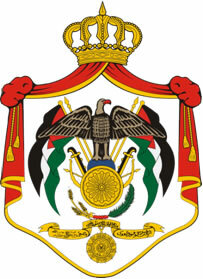Located in the Middle East, Jordan is the most westernized country in this region, a fact provided by the signing of a peace agreement with Israel. Its territory is limited to Lebanon (to the northwest), Syria (to the north), Israel (to the west), Iraq (to the east) and Saudi Arabia (to the south), the country has 26 km of coastline on the Gulf of Aqaba, the only access point for the sea. The Jordan name comes from the Jordan River, which is present in one part of the country.

Jordan's territory is of great historical importance. There are biblical narratives that mention this region, such as the conflicts between Israel and local tribes. Another element of great importance is the archaeological site of Petra, where buildings are located. monuments made by the Nabataean people on the rocks of a great canyon, this site attracts millions of visitors to the country.

Petra Archaeological Site
The national economy is underdeveloped. Agriculture is extremely hampered by the scarcity of water resources. The exploration of phosphate and potassium carbonate, in addition to tourism, are Jordan's main sources of wealth. The composition of the country's Gross Domestic Product (GDP) is as follows: Agriculture (3%); Industry (29%); Services (68%).
Do not stop now... There's more after the advertising ;)
Jordan's unemployment rate has increased every year, and one of the factors contributing to this increase is the migratory flow. Palestinians to Jordan, as the constant Israeli occupation of Palestinian territory has intensified these migrations. This process triggers a problem for the local government, which is trying to control Islamic fundamentalism and maintain harmony between Palestinians and the country's natural Bedouin tribes.

Jordan Coat of Arms
Jordan data:
Territorial extension: 89,342 km².
Location: Middle East.
Capital: Amman.
Climate: Subtropical arid.
Government: Parliamentary monarchy.
Administrative division: 12 provinces.
Language: Arabic (official).
Religion: Islam 93.8%, others 3.3%, no religion and atheism 2.9%.
Population: 6,316,432 inhabitants. (Men: 3,239,280; Women: 3,077,152).
Ethnic Composition: Palestinian Arabs 56%, Jordanian Arabs 42.2%, Bedouin Arabs 0.8%, Circassians 0.5%, Chechens 0.3%, Armenians 2%.
Demographic density: 70 inhab/km².
Average annual population growth rate: 3%.
Population residing in urban areas: 78.46%.
Population residing in rural areas: 21.54%.
Undernourished population: less than 5%.
Life expectancy at birth: 72.2 years.
Households with access to drinking water: 98%.
Households with access to a health network: 85%.
Human Development Index (HDI): 0.681 (high).
Currency: Jordanian Dinar.
Gross Domestic Product (GDP): 20 billion dollars.
GDP per capita: $15,724.
External relations: World Bank, IMF, WTO, UN.
By Wagner de Cerqueira and Francisco
Graduated in Geography
Would you like to reference this text in a school or academic work? Look:
FRANCISCO, Wagner de Cerqueira and. "Jordan"; Brazil School. Available in: https://brasilescola.uol.com.br/geografia/jordania.htm. Accessed on June 27, 2021.
